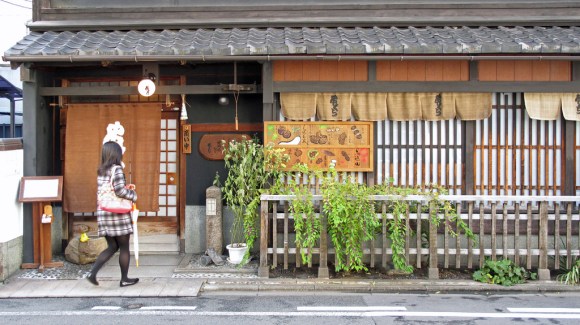
Although visitors to Japan routinely compliment the country for its world-class hospitality and excellent customer service, dining in Japanese restaurants can be a confusing experience for tourists and residents alike. Even the most seasoned long-time expats can still be put off by some of these strange behaviors. Of course, everything is relative as Japanese tourists overseas complain about the opposite, but click below to find out seven ways that a visit to a Japanese restaurant may surprise you!
1. Yelling to get the server’s attention

The most startling thing to see at a Japanese restaurant may be the shouts of “sumimasen!” (Japanese for “excuse me”) around your table. Unlike in Western countries where yelling at your waiter is a surefire way to getting your food spit on (or worse), Japanese wait staff usually expect you to call to them when you are ready to order. This can be quite surprising to first-time visitors to Japan who think of the country as polite and definitely not the type to scream at the help. Even though this is the cultural norm, some expats living in Japan still may find it hard to muster up the courage to shout in the middle of the restaurant.
2. Small glasses of water

Even in the hottest days of a hellish Japanese summer, the water glasses at a restaurant will still be the size of a shotglass. This leaves thirsty foreigners feeling awkward about having to constantly ask to refill their doll-sized cups. It may leave you wondering how normal Japanese people get enough water to hydrate them throughout the day. On the plus side, nearly every restaurant gives you water without you having to ask for it and not ordering a drink with your meal isn’t considered strange at all.
3. Plastic models and picture-heavy menus
One thing about Japanese restaurants that many foreigners who cannot speak the language love is how the menus are full of pictures and plastic models of food adorn the front window. It may feel a bit strange to see all of your potential meal displayed in a glass case before you walk into the restaurant, but there is something amazing about not having to imagine what your food will look like when ordering, and those who spend any length of time in Japan often miss this when they return to their own country.
▼ Japanese menus: who needs to read when you can point?
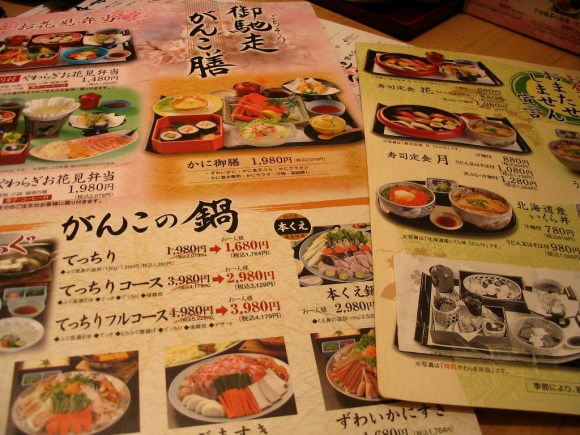
For the foreign tourist who has had a tough day of sightseeing among unreadable signs and transportation timetables, sitting down at a restaurant and opening up to see a menu full of food pictures for you to point at feels like heaven. This is one of the things Japanese tourists overseas also miss most: the ability to see your food before you order rather than wading through text-only menus and hoping that the dish you ordered is how you imagined it.
4. Using your own chopsticks to get food from communal plates
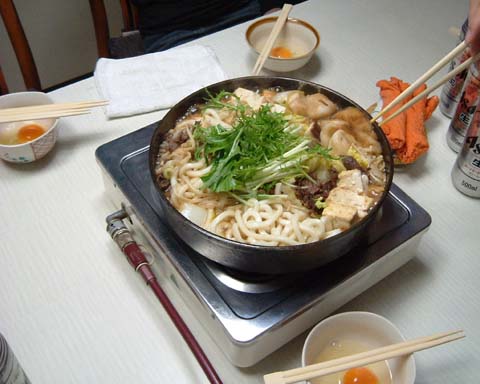
There are a lot of Japanese foods, like yakiniku or sukiyaki, where it is very common for multiple people to eat from the same serving dish. And when going out to eat with close friends or family, it is not uncommon to order large dishes and share among the dinner party. But it can kind of gross foreigners out when people use their own chopsticks to get food from the communal plates, even if they make the effort to use the other side of the chopsticks. Usually in Western restaurants a separate utensil will be provided to dish out the food to smaller plates, but in more intimate situations in Japan, people seem to prefer just to use their own chopsticks. Oh, and although many foreigners coming to Japan learn that it is considered polite to turn one’s chopsticks around and take food from shared plates using the opposite ends, almost no one ever does this and doing so when others aren’t will probably make things awkward rather than you seem polite, so just go with the flow and do as others do.
5. Arguing over who pays the bill
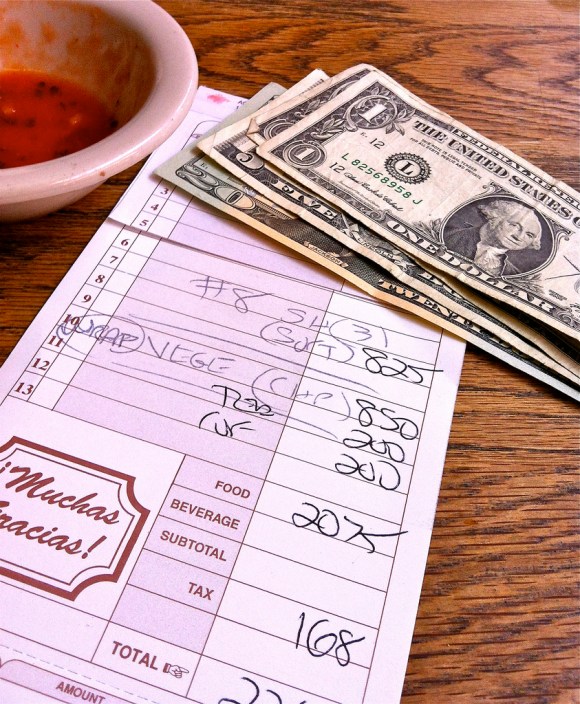
As Japan places importance on hierarchy and social order, it is not uncommon for the person who pays the bill to make a big deal of it. You see this in countries like America, but it is not really the power play that comes at the end of a Japanese meal. So make sure you say thank you and acknowledge whoever pays your bill! A simple “gochisosama deshita” is often all that is required when thanking the person who picks up the tab.
6. Leaving a tip? Prepare to get chased.
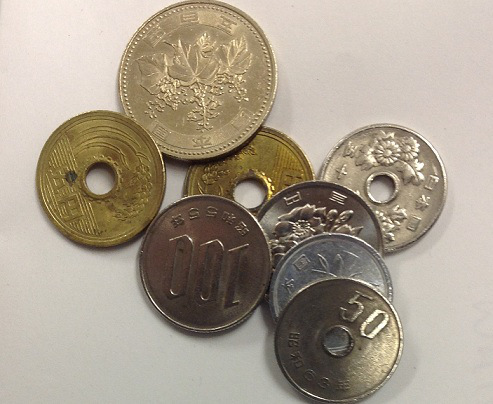
While there are many countries that pay their service industry workers adequately and do not have the practice of paying an extra tip on top of the bill, tipping at a Japanese restaurant can create a huge scene of confusion. There are so few situations in Japan where paying a tip is expected that your server will likely think you have forgotten your money and chase you down to make sure you do not leave it. Explaining that you wanted to leave some extra yen to say thanks will just get you a confused look. See the amount written on the bill? That’s all you need to pay. There now, isn’t that nice and easy?
7. Long waits for some, no waiting for others

Since a lot of the Japanese service industry is dedicated to getting you the best service as fast as possible, a lot of times restaurants will bring out your food as soon as it is done. This may sound great, but since a lot of Western chefs pride themselves on spacing food orders to make sure the whole table eats at once, foreigners may find it weird to have a couple of people without food while everyone else is eating. Similarly, early finishers will also find their plates cleared away by restaurant staff long before others on the table have finished eating. While for many non-Japanese this is rather unpleasant, as it makes the quicker eater feel like a glutton and slower eaters feel the pressure to finish, in Japan it’s not really considered an issue.
Have you had any really strange experiences at a restaurant in Japan? Please let us know in the comments below, we would love to hear about your confusing times dining out in Japan!
Feature Image: Flickr (ɑlɑstɑr ó clɑonɑ́ın)
Source: Madame Riri

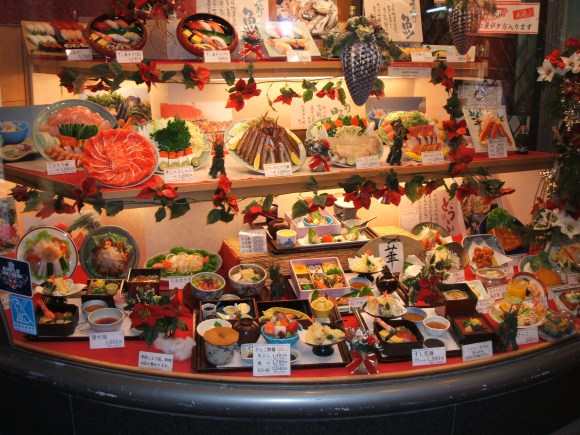 Image:
Image:  Seven facts about Japanese chopsticks to help you win friends and influence people
Seven facts about Japanese chopsticks to help you win friends and influence people The top-ranked restaurants in Japan, Asia and the world!
The top-ranked restaurants in Japan, Asia and the world! Japan’s top 10 best-value family restaurants, as chosen by diners
Japan’s top 10 best-value family restaurants, as chosen by diners 5 things about Japanese customer service that surprise foreign visitors
5 things about Japanese customer service that surprise foreign visitors Eat like a big kid at this Kyoto cafe with their “Kids’ Special” just for grownups!
Eat like a big kid at this Kyoto cafe with their “Kids’ Special” just for grownups! McDonald’s new Happy Meals offer up cute and practical Sanrio lifestyle goods
McDonald’s new Happy Meals offer up cute and practical Sanrio lifestyle goods All-you-can-drink Starbucks and amazing views part of Tokyo’s new 170 meter-high sky lounge
All-you-can-drink Starbucks and amazing views part of Tokyo’s new 170 meter-high sky lounge Super Nintendo World expansion gets delayed for several months at Universal Studios Japan
Super Nintendo World expansion gets delayed for several months at Universal Studios Japan Beautiful Sailor Moon manhole cover coasters being given out for free by Tokyo tourist center
Beautiful Sailor Moon manhole cover coasters being given out for free by Tokyo tourist center Kyoto’s 100 Demons yokai monster parade returns!
Kyoto’s 100 Demons yokai monster parade returns! Studio Ghibli glasses cases let anime characters keep an eye on your spectacles
Studio Ghibli glasses cases let anime characters keep an eye on your spectacles Starbucks reopens at Shibuya Scramble Crossing with new look and design concept
Starbucks reopens at Shibuya Scramble Crossing with new look and design concept More foreign tourists than ever before in history visited Japan last month
More foreign tourists than ever before in history visited Japan last month The oldest tunnel in Japan is believed to be haunted, and strange things happen when we go there
The oldest tunnel in Japan is believed to be haunted, and strange things happen when we go there Ghibli background artist Naohisa Inoue’s painting technique is out of this world
Ghibli background artist Naohisa Inoue’s painting technique is out of this world Disney princesses get official manga makeovers for Manga Princess Cafe opening in Tokyo
Disney princesses get official manga makeovers for Manga Princess Cafe opening in Tokyo Beautiful new Final Fantasy T-shirt collection on the way from Uniqlo【Photos】
Beautiful new Final Fantasy T-shirt collection on the way from Uniqlo【Photos】 Is the new Shinkansen Train Desk ticket worth it?
Is the new Shinkansen Train Desk ticket worth it? Foreign English teachers in Japan pick their favorite Japanese-language phrases【Survey】
Foreign English teachers in Japan pick their favorite Japanese-language phrases【Survey】 Japanese convenience store packs a whole bento into an onigiri rice ball
Japanese convenience store packs a whole bento into an onigiri rice ball We try out “Chan Ramen”, an underground type of ramen popular in the ramen community
We try out “Chan Ramen”, an underground type of ramen popular in the ramen community Studio Ghibli releases Kiki’s Delivery Service chocolate cake pouches in Japan
Studio Ghibli releases Kiki’s Delivery Service chocolate cake pouches in Japan Japan’s bone-breaking and record-breaking roller coaster is permanently shutting down
Japan’s bone-breaking and record-breaking roller coaster is permanently shutting down New definition of “Japanese whiskey” goes into effect to prevent fakes from fooling overseas buyers
New definition of “Japanese whiskey” goes into effect to prevent fakes from fooling overseas buyers Our Japanese reporter visits Costco in the U.S., finds super American and very Japanese things
Our Japanese reporter visits Costco in the U.S., finds super American and very Japanese things Studio Ghibli unveils Mother’s Day gift set that captures the love in My Neighbour Totoro
Studio Ghibli unveils Mother’s Day gift set that captures the love in My Neighbour Totoro Foreign passenger shoves conductor on one of the last full runs for Japan’s Thunderbird train
Foreign passenger shoves conductor on one of the last full runs for Japan’s Thunderbird train Domino’s Japan now sells…pizza ears?
Domino’s Japan now sells…pizza ears? New Japanese KitKat flavour stars Sanrio characters, including Hello Kitty
New Japanese KitKat flavour stars Sanrio characters, including Hello Kitty Kyoto creates new for-tourist buses to address overtourism with higher prices, faster rides
Kyoto creates new for-tourist buses to address overtourism with higher prices, faster rides Sales of Japan’s most convenient train ticket/shopping payment cards suspended indefinitely
Sales of Japan’s most convenient train ticket/shopping payment cards suspended indefinitely Sold-out Studio Ghibli desktop humidifiers are back so Totoro can help you through the dry season
Sold-out Studio Ghibli desktop humidifiers are back so Totoro can help you through the dry season Japanese government to make first change to romanization spelling rules since the 1950s
Japanese government to make first change to romanization spelling rules since the 1950s Ghibli founders Toshio Suzuki and Hayao Miyazaki contribute to Japanese whisky Totoro label design
Ghibli founders Toshio Suzuki and Hayao Miyazaki contribute to Japanese whisky Totoro label design Doraemon found buried at sea as scene from 1993 anime becomes real life【Photos】
Doraemon found buried at sea as scene from 1993 anime becomes real life【Photos】 Tokyo’s most famous Starbucks is closed
Tokyo’s most famous Starbucks is closed One Piece characters’ nationalities revealed, but fans have mixed opinions
One Piece characters’ nationalities revealed, but fans have mixed opinions We asked a Uniqlo employee what four things we should buy and their suggestions didn’t disappoint
We asked a Uniqlo employee what four things we should buy and their suggestions didn’t disappoint Princesses, fruits, and blacksmiths: Study reveals the 30 most unusual family names in Japan
Princesses, fruits, and blacksmiths: Study reveals the 30 most unusual family names in Japan Mermaids and Fried Wikipedia: the art of translating menu items into English
Mermaids and Fried Wikipedia: the art of translating menu items into English Kyoto restaurant only sells one dish, features mannequins and gets rave reviews!
Kyoto restaurant only sells one dish, features mannequins and gets rave reviews! Korean Officials to foreign tourists: “If you contract MERS, we’ll give you $3,000!”
Korean Officials to foreign tourists: “If you contract MERS, we’ll give you $3,000!” Why is Japan such an unpopular tourist destination?
Why is Japan such an unpopular tourist destination? We went to a Japanese restaurant in Italy, ate green sushi, learned a lesson about taking it easy
We went to a Japanese restaurant in Italy, ate green sushi, learned a lesson about taking it easy Pop quiz: Test yourself in 5 situations of Japanese manners and customs
Pop quiz: Test yourself in 5 situations of Japanese manners and customs Is Japan’s custom of slurping noodles irritating, and why do they do it?【SN24 reader survey】
Is Japan’s custom of slurping noodles irritating, and why do they do it?【SN24 reader survey】 You know you’re in Japan when…【List】
You know you’re in Japan when…【List】 Five things that shock Japanese people living abroad
Five things that shock Japanese people living abroad Why hayashi rice should be your last meal before leaving Japan
Why hayashi rice should be your last meal before leaving Japan The number 1 ‘most satisfying’ city in the world is….TOKYO!!!
The number 1 ‘most satisfying’ city in the world is….TOKYO!!! 6 surprising things about having a baby in Japan
6 surprising things about having a baby in Japan Stingy people rejoice as Japanese restaurants in New York introduce a ban on tipping
Stingy people rejoice as Japanese restaurants in New York introduce a ban on tipping Kansai and Kanto prove again that they are each distinct regions when it comes to food
Kansai and Kanto prove again that they are each distinct regions when it comes to food What your favorite sushi says about your income
What your favorite sushi says about your income
Leave a Reply